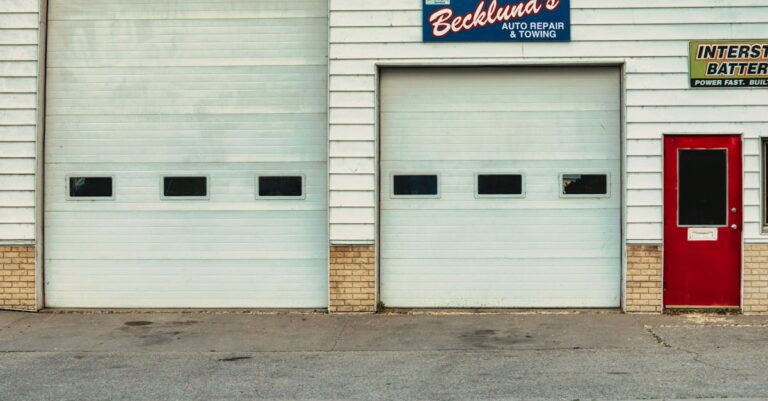Table of Contents
ToggleWhen traditional schools feel more like gladiator arenas than places of learning, alternative schools step in like a superhero with a cape. Designed for students with behavior challenges, these schools offer a fresh start and a tailored approach that can transform chaos into creativity. Imagine a place where learning happens without the constant threat of a paper airplane showdown or a surprise dodgeball match in math class.
Overview of Alternative Schools for Behavior Problems
Alternative schools cater specifically to students with behavior challenges that disrupt their learning in traditional settings. These institutions prioritize individual needs, offering customized, focused education plans that promote emotional and social development. Experiential learning, often through hands-on activities, encourages engagement and positive behavioral changes.
Focused on smaller class sizes, alternative schools foster stronger relationships between teachers and students. These supportive environments create a sense of safety, allowing students to express themselves and explore personal growth. In contrast to conventional schools, many alternative settings utilize therapeutic techniques, addressing underlying issues that contribute to disruptive behavior.
Programs may include counseling services, behavioral interventions, and life skills training. Such comprehensive support assists students in developing coping mechanisms and improving interpersonal skills. Evidence shows that students in alternative schools often experience higher rates of success in managing their behavior and academic performance.
Some alternative schools adopt specific educational philosophies, such as Montessori or Waldorf models, emphasizing holistic development. These diverse approaches allow flexibility in teaching styles and curricula, making learning more enjoyable and relevant for students facing challenges. Community involvement and parental engagement augment these programs, fostering a collaborative environment for student success.
Alternative schools serve as a valuable option for students requiring a different approach to their education. They provide a path for students who struggle in traditional environments, ensuring they receive the right support to thrive. By addressing both academic and behavioral needs, alternative schools transform the educational experience for many at-risk students.
Types of Alternative Schools
Alternative schools encompass various approaches to support students facing behavioral challenges. Two prominent types include therapeutic schools and behavioral modification programs.
Therapeutic Schools
Therapeutic schools focus on blending academics with emotional and psychological support. These institutions create a healing environment, often integrating mental health counseling into their curriculum. Staff members frequently consist of trained therapists and educators who address the unique needs of each student. Students engage in personalized therapy sessions that promote emotional regulation and coping strategies. Such settings encourage self-expression through creative outlets, aiding in the development of social skills. The ultimate goal is to foster resilience and better emotional health while ensuring academic progress.
Behavioral Modification Programs
Behavioral modification programs utilize structured systems to change disruptive behavior. These programs implement specific strategies that promote positive behavior through reinforcement. Students receive clear expectations and consequences tailored to their needs. Regular assessments help track progress, allowing for adjustments to individual plans. Additionally, collaboration with parents and guardians strengthens the program’s effectiveness. Through targeted interventions, students learn crucial life skills that enhance their interpersonal relationships and academic performance. Such environments emphasize accountability and personal growth, fostering a sense of achievement among participants.
Curriculum and Teaching Methods
Alternative schools prioritize tailored educational experiences for students facing behavior problems. Customized approaches foster positive change and growth.
Individualized Education Plans
Educators create Individualized Education Plans (IEPs) for students exhibiting behavior challenges. These plans define specific academic and behavioral goals, ensuring that each student’s unique needs receive attention. Teachers collaborate with parents and support staff to develop these IEPs, incorporating therapies addressing social and emotional issues. Progress monitoring occurs frequently, allowing adjustments to IEPs based on student performance. Success in alternative schools often correlates with effective IEP implementation, enhancing both academic achievement and personal development.
Behavioral Support Strategies
Behavioral support strategies play a crucial role in the curriculum of alternative schools. Educators utilize proactive methods like positive reinforcement to encourage appropriate behavior. They implement structured routines, which help students understand expectations clearly. Regular counseling sessions address underlying issues, promoting emotional stability and improving coping skills. Collaboration with families contributes to the effectiveness of these strategies, ensuring consistency between school and home environments. As a result, students often demonstrate significant improvements in both behavior management and academic participation.
Benefits of Alternative Schools
Alternative schools offer numerous advantages for students with behavior problems. These institutions create an environment tailored to individual needs, promoting both academic and personal growth.
Improved Academic Performance
Students in alternative schools often show enhanced academic performance. Smaller class sizes provide personalized attention, allowing teachers to focus on each student’s strengths and challenges. Customized learning plans address specific learning goals, which increases student engagement. Many of these schools integrate innovative teaching methods that resonate better with students who have struggled in traditional settings. As a result, students frequently achieve higher grades and demonstrate better retention of knowledge compared to their peers in conventional schools.
Social and Emotional Development
Development of social and emotional skills occurs prominently in alternative schools. Programs often include counseling and therapy sessions aimed at addressing underlying issues contributing to behavioral challenges. Students gain opportunities to develop coping strategies, leading to improved interpersonal skills. Alternative environments encourage self-expression, allowing students to build confidence and self-awareness. Collaborative projects foster teamwork, helping students strengthen relationships with peers. This holistic approach to education promotes resilience and emotional well-being, crucial for long-term success.
Challenges Faced by Alternative Schools
Alternative schools encounter unique challenges that can impact their effectiveness. Stigmatization presents a significant barrier, affecting students’ self-esteem and acceptance in broader society.
Stigmatization of Students
Stigmatization often arises from negative perceptions surrounding alternative education. Many students face judgment due to attending these schools, leading to feelings of isolation. As a result, their sense of belonging may diminish. Additionally, peers in traditional schools might view them as troublemakers, compounding the issue. This stigma can hinder their social relationships and exacerbate behavioral problems. Overcoming these perceptions is vital for fostering a supportive environment, allowing students to thrive and embrace educational opportunities.
Funding and Resource Limitations
Funding and resource limitations pose substantial challenges for alternative schools. Many rely on state and federal funding to operate effectively. Unfortunately, these funds often fall short, affecting the variety and quality of programs available. Limited resources can impact hiring qualified staff or providing necessary materials. Without sufficient financial backing, schools struggle to implement tailored strategies that address diverse student needs. Addressing funding disparities can enhance program effectiveness, ultimately improving student outcomes.
Conclusion
Alternative schools offer a vital lifeline for students grappling with behavior challenges. By providing tailored educational experiences and a nurturing environment, these institutions foster personal growth and academic success. The emphasis on individualized support and therapeutic techniques equips students with essential coping skills and emotional resilience.
While challenges like stigmatization and funding limitations exist, the benefits of alternative schools far outweigh the drawbacks. They create opportunities for students to thrive academically and socially, transforming their educational journeys. As society continues to recognize the importance of diverse educational approaches, alternative schools will play an increasingly critical role in supporting students who need it most.





